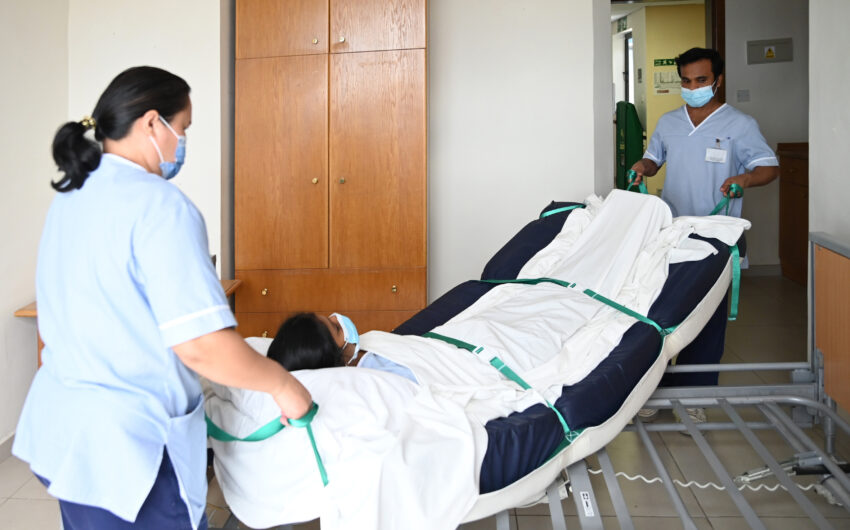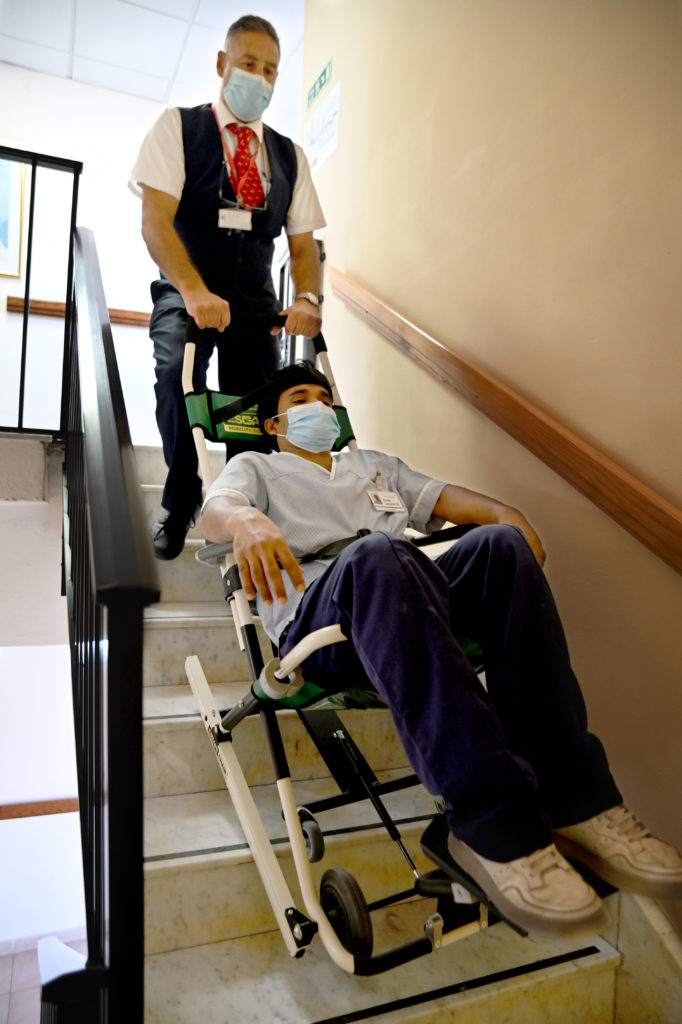
By the end of this year, a number of teams from different departments in all facilities operated by CareMalta will have completed training in the use of Escape Mobility evacuation equipment and other safety procedures – part of the Vassallo Group’s annual fire awareness programme.
Martin Bondin, the group’s health and safety manager, who conducts the training, said: “Safety is central to all our practices and operations. Since our care homes house a number of highly dependent and vulnerable residents, this equipment serves as an additional means of safety in the event of a fire or any other emergency.”
Each floor in each care home is equipped with Escape chairs and sheets. An Escape chair can be used to evacuate people to safety in a seated position down a flight of stairs. A simple procedure can make the chair fully functional within a few seconds.
One way of evacuating residents who are unable to leave their beds is through the use of a water-repellent, anti-static and heat- and flame-resistant Escape sheet. This is kept permanently under each mattress and, in the event of an emergency, its safety straps are secured over the mattress and the resident. The latter is then secure and immobilised for safe horizontal and vertical evacuation down a flight of stairs.
Escape chairs and sheets are CE, TÜV and ISO 9001 certified.
“In 2017, when this equipment was first introduced, a number of expert trainers from Escape Mobility Company, our supplier, visited CareMalta to hold site-specific training sessions with our employees. I’m happy to say that all training is now coordinated and conducted in-house,” Mr Bondin says.
“It is important that staff receive ongoing theoretical and practical training in their own building to be able to master the skills needed to use the equipment, and to know that it will fit into their own fire evacuation and people moving procedures,” he adds.
“Besides ensuring that staff at the workplace are trained in the use of evacuation chairs and mattresses training helps instil confidence in the event of having to assist a vulnerable colleague in a crisis or to evacuate a building, regardless of it being part of an annual fire drill or if it really is in an emergency.”
 Around 50 members of staff from each care home have attended four-hour weekly training sessions covering a number of topics in connection with fire awareness and safety. These include subjects like hazard spotting, how to avoid potential fire hazards, knowing your fire extinguisher and identifying safety breaches. Participants also discuss research and statistics reflecting the need for this type of training.
Around 50 members of staff from each care home have attended four-hour weekly training sessions covering a number of topics in connection with fire awareness and safety. These include subjects like hazard spotting, how to avoid potential fire hazards, knowing your fire extinguisher and identifying safety breaches. Participants also discuss research and statistics reflecting the need for this type of training.
When it comes to fire safety and guarding the lives of vulnerable older adults in care homes, Mr Bondin says that vigilance of fire safety hazards is vital for the protection of these citizens who need it the most.
“There are quite a few fire safety hazards in a care home, especially when you consider that most of the daily hot processes take place in the kitchen or laundry, where electrical equipment is being used all the time. Training helps to keep potential hazards to a minimum. It is therefore vital that we have well-trained staff to achieve this for the safety of all our residents.”
CareMalta is also working closely with the Civil Protection Department through regular familiarisation visits to the care homes it operates in order to build a close rapport with the management team and physical environment of the home and to create more awareness.
Throughout the year, members of the CPD visited various homes in a bid to get acquainted with where they are located and other logistics. “They tour the premises from top to bottom, starting from the roof, right down to the basement, and also discuss means of escape and suitable equipment in the event of a fire or any other incident.
“These visits are important to us, since in an emergency situation we do not have time to waste. Every second counts. So this exercise is useful both for the CPD and for CareMalta.”
In terms of health and safety, the Vassallo Group is always aligning itself with local legislation.
“We also have health and safety representatives who regularly meet up with the group’s CEO. We recognise the importance of listening to their concerns and involving them in the updating and production of regular risk assessments. After all, these people are frontliners when it comes to ensuring safety in all our care homes.”
